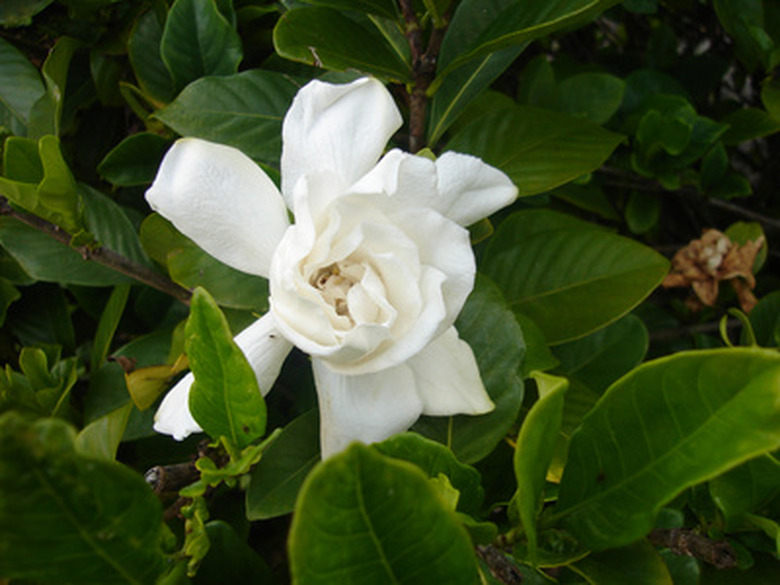How To Transplant Gardenias
Things Needed
- Pruning scissors
- Shovel
- Compost
- Peat moss
- Garden hose
- Shovel
Gardenias are beautiful flowers with scented white blooms and deep green, glossy leaves that grow on bushes. Despite their beauty and aroma, these plants are quite tricky to take care of. You may want to transplant gardenia bushes to another location in your yard, or to a new place altogether, to better enjoy the sight and smell of this beautiful bush. Many people transplant these flowers below their bedroom windows, where a light draft sends the fragrance inside. Whatever the reason, careful planning is required so you do not sabotage the health of your gardenia plant.
Step 1
Prune the foliage and branches of your gardenia bush a week before transplant to reduce its size, so the plant focuses its energy on re-establishing its roots. Use sharp, clean pruning scissors to cut it down to 1/3 or 1/4 of its height.
- Gardenias are beautiful flowers with scented white blooms and deep green, glossy leaves that grow on bushes.
- You may want to transplant gardenia bushes to another location in your yard, or to a new place altogether, to better enjoy the sight and smell of this beautiful bush.
Step 2
Prepare the new site a day before the transplant so the gardenia bush spends less time out of the soil. Select a spot with well-drained, rich soil with a pH between 5.0 and 6.0 that receives partial shade. Dig a hole twice the size of the root ball and equally deep. Add equal amounts of manure or peat moss and compost into the hole and mix well. Water lightly to ensure they go down.
Step 3
Dig up your gardenia plant. Insert a shovel at an angle to try to get as much of the soil and root structure as possible, so it has a better chance of survival in its new location. Once you dig around the root ball, insert the shovel under it carefully to lift the plant up and out of the ground. If transplanting a nursery-bought gardenia from the container to the soil, tip the container to its side and slide the plant out, along with its roots and soil.
- Prepare the new site a day before the transplant so the gardenia bush spends less time out of the soil.
- If transplanting a nursery-bought gardenia from the container to the soil, tip the container to its side and slide the plant out, along with its roots and soil.
Step 4
Lower the gardenia into its new planting hole, ensuring the top of the root ball is level with the soil line. Adjust the hole size if necessary by digging deeper in case you underestimated the size of the root ball, or adding some soil to decrease the hole's size.
Step 5
Backfill the soil around the roots to cover it completely. Tamp it down with your hands to remove trapped air bubbles. Water the plant gently.
Tip
The best time to transplant gardenias is in fall right after it stops flowering and begins to go into dormancy or slows down. There are fewer chances of it going into transplant shock. Work slowly and carefully when removing the gardenia from the soil, so you do not break or damage the roots with your shovel. Try to get as many roots as possible.
Warning
Do not transplant your gardenias if they are in poor health or diseased–they will not survive the move. Nurture them to restore health, then replant in a new location.
